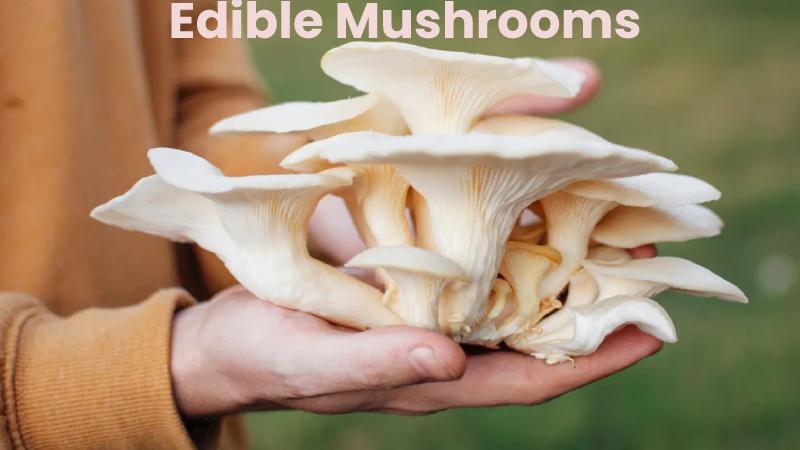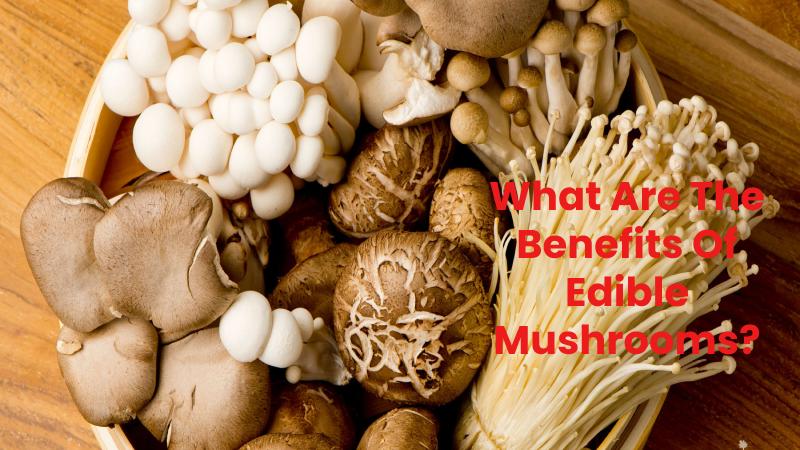Edible Mushrooms
Edible mushrooms have remained consumed for thousands of years around the world for both gastronomic and medicinal purposes. In the kitchen, they add a particular flavor to dishes and remain used as a substitute for meat.
Although edible mushrooms add extra flavor to food, some believe they offer little or no nutritional value. Also, the poisonous varieties of mushrooms have given them a bad rap.

In this article, the benefits and potential health risks associated with eating mushrooms will remain discussed.
Table of Contents
What Are Edible Mushrooms?
Edible mushrooms, or mushrooms, are often considered vegetables, but they have their kingdom: Fungi (Latin, literally mushrooms). An edible mushroom is the fleshy fruiting body of the mushroom, which usually has a shape that resembles an umbrella on a stem or a hat.
Both are commercially cultivated and found in nature. Then they grow in variety together on the surface and below the ground. There are thousands of types of fungi, but only a tiny part of them remain planted with edible species. The best-known types in the world include the mushroom, the shiitake, the portobello, and the chanterelle.
They can remain purchased fresh, dried, or canned. Some types are also used as potential dietary supplements to improve health.
Nutritional Properties Of Edible Mushrooms
The Romans call it “food of the gods.” They contain few calories but are rich in protein, fibre, and various vitamins and minerals. The amounts of the nutrients depend on the type of mushroom, but they are generally rich in potassium, B vitamins, and selenium. But all edible mushrooms are low in fat.
A 3.5-Ounce (100-Gram) Serving Of Raw White Mushrooms Contains:
- Calories: 22
- Carbohydrates: 3 grams
- Fibre: 1 gram
- Protein : 3 grams
- Fat: 0.3 grams
- Potassium: 9% of the RDI (Recommended Daily Intake)
- Selenium: 13% of the RDI
- Riboflavin: 24% of the RDI
- Niacin: 18% of the RDI.
Interestingly, cooked white mushrooms have higher amounts of nutrients because they release nutrients in more significant amounts when they remain cooked. Different types, groups, or species of fungi can contain nutrients at higher or lower levels. For example, cooked shiitake mushrooms have 45% of the RDI for copper in a 3.5-ounce (100-gram) serving.
In addition, mushrooms contain antioxidants, phenols, and polysaccharides. The content of these compounds can vary depending on many factors, such as growing method, storage conditions, processing, and cooking.
Learn more about “Low-Calorie Foods” in our article: 150 Low-Calorie Foods That Help You Lose Weight.
What Are The Benefits Of Edible Mushrooms?
The nature of these products confers an essential list of benefits to consider in their production, cultivation, and consumption around the world. These capacities are due to its protein content and micronutrients such as vitamins and minerals, medicinal properties, and ability to stimulate the immune system. Here are the main benefits of mushrooms.

Some Mushrooms Contain Vitamin D
Similar to humans, mushrooms produce vitamin D after exposure to sunlight. They are the only non-animal food containing vitamin D. Wild mushrooms have a considerable amount of vitamin D, as they remain exposed to sunlight. The amount they contain this vitamin depends on the climate and latitude.
In the same way, when exposed to UV light before or after harvest, plants produce vitamin D. Eating mushrooms enriched with vitamin D may improve the health status of some people with vitamin D deficiency.
